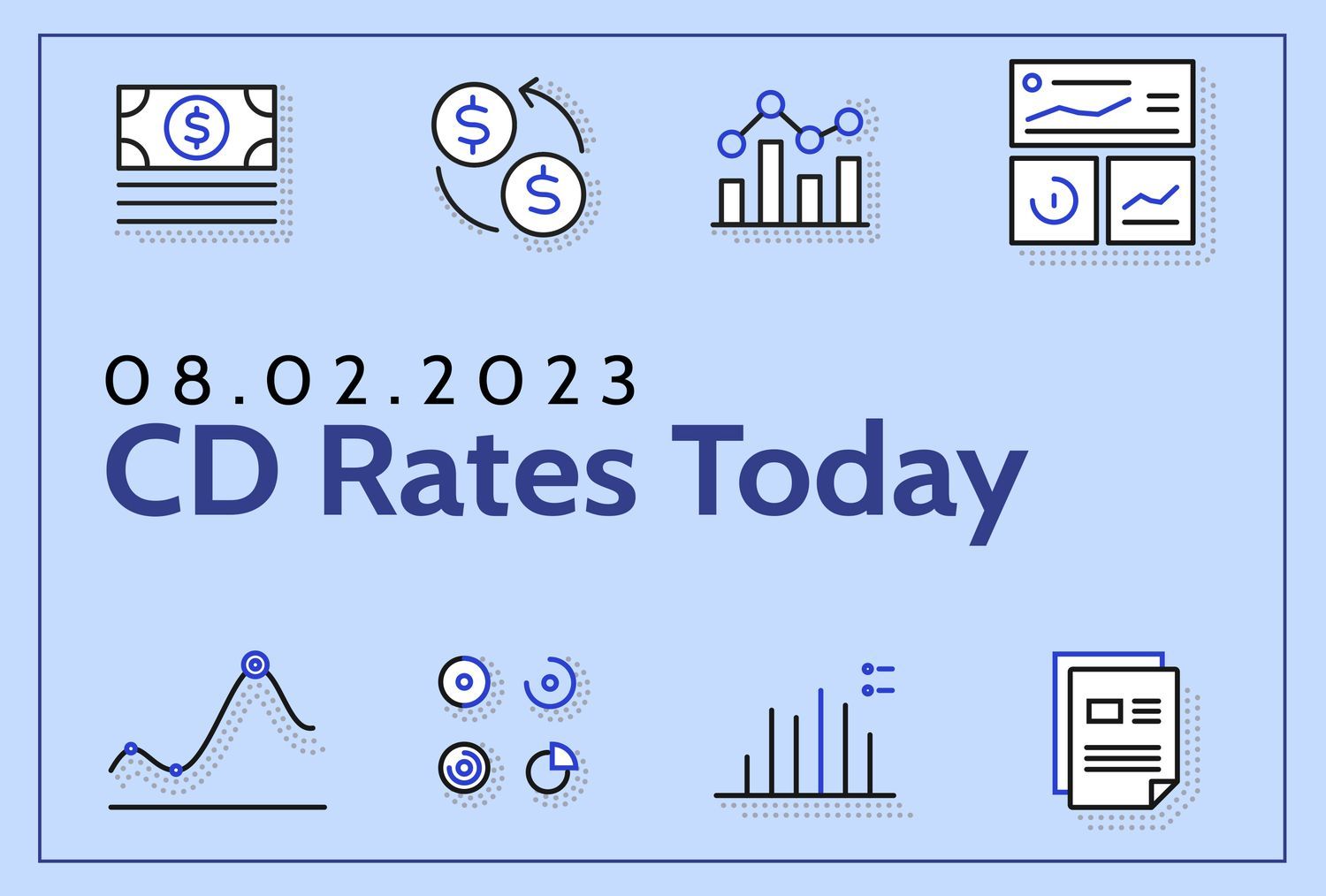Top CDs Today: Another CD Offers Benchmark Rate
CD Term Today's Top National Bank Rate Today's Top National Credit Union Rate Today's Top National Jumbo Rate 3 months 5.20% APY* 5.09% APY 5.20% APY 6 months 5.50% APY 5.75% APY* 5.35% APY 1 year 5.60% APY 5.50% APY 5.75% APY* 18 months 5.75% APY* 5.40% APY 5.52% APY 2 years 5.05% APY 5.30% APY 5.35% APY* 3 years 5.00% APY 5.25% APY 5.35% APY* 4 years 4.65% APY 4.85% APY 5.12% APY* 5 years 4.66% APY 4.77% APY 4.85% APY*
*Indicates the highest APY offered in each term. To view our lists of the top-paying CDs across terms for bank, credit union, and jumbo certificates, click on the column headers above.
Will CD Rates Climb Higher This Year?
CD rates are already at record levels, but it's possible they could edge higher still. That's because the Federal Reserve last week announced another 0.25% increase in the federal funds rate. That matters because the central bank's benchmark rate is a direct driver of the yields that banks and credit unions are willing to pay customers for their deposits.
Since March 2022, the Federal Reserve has been aggressively combating decades-high inflation, making 11 hikes to the fed funds rate over the past 12 meetings. With the latest bump, the cumulative increase totals 5.25% and brings the fed funds rate to its highest level since 2001. That's created a boon for CD shoppers, as well as for anyone holding cash in a high-yield savings or money market account.
Last week's Fed announcement provided no strong indications on whether it will raise its benchmark rate even higher this year. The written announcement simply reiterated the Fed's commitment to bring inflation back down to its target level of 2%.
In his post-announcement press conference, Federal Reserve Chairman Jerome Powell indicated that the rate-setting committee has not made any decisions yet on whether to raise rates again in 2023, or if so, what timing or pace any increases would follow.
For now, it's reasonable to expect that the latest hike—as well as any potential future increases—will push CD rates a bit higher. But the impact could be small because the Fed's July move had been nearly certain since June, and many banks and credit unions boosted their rates in advance. Once it finally appears the Fed is ready to end its rate-hike campaign for good, that will be the signal that CD rates have likely reached their peak.
Note that the "top rates" quoted here are the highest nationally available rates Investopedia has identified in its daily rate research on hundreds of banks and credit unions. This is much different than the national average, which includes all banks offering a CD with that term, including many large banks that pay a pittance in interest. Thus, the national averages are always quite low, while the top rates you can unearth by shopping around are often five, 10, or even 15 times higher.
Rate Collection Methodology Disclosure
Every business day, Investopedia tracks the rate data of more than 200 banks and credit unions that offer CDs to customers nationwide and determines daily rankings of the top-paying certificates in every major term. To qualify for our lists, the institution must be federally insured (FDIC for banks, NCUA for credit unions), and the CD's minimum initial deposit must not exceed $25,000.
Banks must be available in at least 40 states. And while some credit unions require you to donate to a specific charity or association to become a member if you don't meet other eligibility criteria (e.g., you don't live in a certain area or work in a certain kind of job), we exclude credit unions whose donation requirement is $40 or more. For more about how we choose the best rates, read our full methodology.
Source: Investopedia


